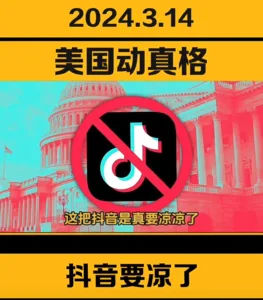今天的《多伦多星报》的照片上有一位我们华人熟悉的面孔——邹至蕙。
她和她83岁的母亲的合照在这份英文报纸的头版上,显得格外显眼。
今天这份报道叙述的是,这位老人、邹至蕙的母亲在今年8月动了手术之后腹部伤口感染,向CCAC打电话打了两个星期以寻求帮助,竟然无人理会。
无奈与情急之下,邹至蕙放弃了继续与多伦多CCAC联络以寻求帮助的努力,把发着高烧的母亲直接送进了急诊室。
虽然老人得到治理并逐渐康复,但邹至蕙对CCAC的反映迟缓以及难以联系上仍然相当不高兴。
那么CCAC 是个什么东东呢?也许我们新移民还很少与其打交道,所以知之甚少。
CCAC的全称为Community Care Access Centres(请参看其网站:http://www.ccac-ont.ca/),是安省政府资助的家庭护理中心,全省有14个区域中心,其中大多地区有5个。
该中心通过招标与营利和非盈利机构签订合同,后者则在获得资助后为出院后需要进一步护理的患者、住在自己家中并需要帮助的耆老以及残疾人提供各种服务。
通俗来讲,CCAC是用我们纳税人的钱“官办”的机构,是一个耗资16.8亿的巨型项目。
但它提供的服务怎样呢?有人评论说,事先预约好的护士失约、一遍又一遍的电话无人接听、一次又一次的投诉也无人理会,这在CCAC已经司空见惯。
尽管贵为国会议员的母亲,女婿还是新民主党的头号人物,竟然由于预约好的护士召之不来,老太太不得不忍受伤口感染带来的痛苦与折磨。
人们都会问:究竟这个家庭护理体系出了什么毛病?
连邹至蕙也不无感慨地说,“如果这样的事发生在我的身上,同样也会发生在其他人身上。
” 大名鼎鼎的国会议员邹至蕙的母亲都遭遇到这种让人难以忍受的对待,何况我们来到加国不久、语言也不是特别灵光、且对安省医疗服务体制不甚了了的新移民?

(图片来源:《多伦多星报》)
我们移民之前总是听到这样的说法“加拿大是孩子的天堂,青年的战场,老人的乐园”,也有不少移民公司将此作为广告的卖点。
移民作为奉献的一代,能够把孩子带到天堂,自己老来也有所养、有所医,趁年轻时候战斗拼搏一番也未尝不可。
但来到加拿大之后,移民们是否享受到加拿大医疗体系的好处与福利?
随便在网上搜索,得到的答案真的让人高兴不起来。
星网早前发表的 “加拿大的医疗体系让我们一家伤透了心”,讲述由于加拿大家庭医生的漫不经心,使原本只携带乙肝病毒的丈夫延误发展成肝癌晚期,不得不回上海进行肝移植手术的故事。
当事人一家不仅美好的移民梦碎,而且因移植手术花费50万人民币。
而与此类似的、大大小小的误诊、延迟、漫长的等候之类更是举不胜举。
那么,仅就老人家庭护理体系而言,问题究竟出在那儿呢?请看今天多伦多星报今天的报道:
与CCAC相关的机构和从业人员,包括倡权组织、护士以及研究人员均认为安省家庭护理体系问题丛生,令人沮丧。
首先是,尽管需要护理的人员过去4年中增加了70%,但资金投入只增加了30%;其次是大量专业护理人员抱怨薪水太低及工作负荷太重而流失;再是有经验且对薪酬要求不高的支援员工(support worker)日益短缺。
由于护理人员短缺,有些护理公司完全拒绝接受新的护理对象,即使CCAC要求这么做也无济于事。
为了接受情况更紧急的新患者,也有护理公司置老患者于不顾,经常取消与后者事先预约好的例行探访。
更令人恼火的是,出了问题的时候不知道找谁,也不知道向谁投诉。
邹至蕙指出,很多人根本不知道怎样来投诉,因此究竟有多少人投诉恐怕无人知晓。
在刚过去的省选选战中,自由党卫生厅长斯密瑟曼(Smitherman)承诺3年7亿的计划,以帮助留在家中的耆老获得体面的服务。
但迄今为止,具体细节仍然相当模糊。
尽管自由党在省选中以压倒优势再胜,但麦坚迪自毁承诺的“前科”令人印象深刻。
而自毁承诺的地方恰恰就是医疗方面,声称前保守党政府留下窟窿,打着提高医疗服务品质的旗号,麦坚迪给安省居民加了医疗税。
这个税不可谓加得不重,但它的效果究竟如何呢?
难道邹至蕙母亲的遭遇就是一种交代和解释?
~~~~~~~~~~~~~~~~~~~~~~~~~~~~~~~~~~~~~~~~~~~~~~~~~~~
附录:多伦多星报原文
Home-care system stretched to limit
MP’s calls unanswered as mother taken to ER
Oct 22, 2007 04:30 AM
Moira Welsh
Staff Reporter
For two weeks, while a surgical wound in her stomach grew raw and infected, Ontario’s home-care system overlooked 83-year-old Ho Sze Chow.
That her daughter is Toronto MP Olivia Chow and her son-in-law is federal NDP Leader Jack Layton – both of whom understand how to manoeuvre through bureaucracies – made no difference.
Scheduled nursing visits were repeatedly skipped. Phone calls and complaints went nowhere.
It was, Chow concluded, a cautionary tale for the 770,000 Ontarians – hospital patients sent home early, the disabled and seniors trying to remain in their homes – expected to use home-care services this year.
Home-care managers acknowledge the $1.68 billion program is stretched to the limit.
For Ho Sze, who had had a tube inserted through her stomach in August to release gall bladder bile, the two weeks of missed home-care appointments sent her back to the emergency ward in September. This happened despite her daughter’s repeated calls to Toronto’s Central Community Care Access Centre, which arranges home-care visits.
“If this can happen to me, as someone who has been in public service for 20 years, this can happen to anyone,” said Chow, whose mother lives with her and Layton near College and Spadina.
Advocates, nurses and health-care academics agree the province’s home-care system is stressed. Health Ministry figures show the number of clients has jumped 75 per cent over the past four years, while funding has risen 30 per cent.
Those interviewed say the problems include staffing shortages caused by shrinking wages, piecework instead of full-time jobs, growing workloads and less skilled, lower-paid support workers replacing nurses.
Anne Wojtak, of the Central CCAC, said privacy issues forbid her from discussing Chow’s mother, but agreed that nursing shortages are affecting home care.
“I do think they are stretched, yes,” Wojtak said in an interview.
Some problems date back to 1997, when the Conservative government asked home-care providers to compete for contracts, awarding them to the lowest bidders rather than traditional providers.
Non-profit organizations such as the Victoria Order of Nurses laid off nurses and personal support workers as for-profit companies successfully cut salaries and benefits to win contracts.
Many nurses left, getting better wages and more security in hospitals and nursing homes.
“Nurses do not get paid the same, so a nurse in a hospital earns a different wage than a nurse in the home-care sector,” said Wojtak. “That is a definite recruitment issue – especially when there is a shortage. … So we do have trouble sometimes keeping nurses in the (home-care) community.”
Lucy Morton, a registered practical nurse who works with the Victoria Order of Nurses in Hamilton, said that over the last year, some local agencies have been so short-staffed they have refused to take new referrals – even though they are required to do so.
Some health-care companies have cancelled visits to existing patients to take on new clients who need care more urgently, she added.
Wojtak said few complaints have been lodged with the Central CCAC, which was created Jan. 1 when the province amalgamated 42 Community Care Access Centres into the current 14. In the first nine months of the year, Wojtak said the Central CCAC has served 37,000 clients and received about 750 complaints.
Ontario-wide, the Ministry of Health reports there were 4,062 complaints in 2004-05 and 3,931 complaints in 2005-06. Complaints are not counted if initial grievances are resolved through meetings with CCAC managers.
Chow and others question the complaint numbers. Chow said few people would figure out how to file a complaint with the CCAC.
York University professor Pam Armstrong, an expert in home care, said many patients have no idea who to call within the system, so complaints are often directed to advocacy groups or researchers.
Since the Liberals came to power in 2003, they have sought to upgrade home care.
Under Health Minister George Smitherman, the lowest-paid home-care workers saw their minimum wage increase to $12.50 an hour from $9.65.
During the recent provincial campaign, Smitherman promised $700 million for a three-year plan that would help older people remain in their homes.
The details were vague, however, with the ministry saying only that money would go to expand a mix of services (including home care) that would allow seniors to live “with dignity.”
The changes weren’t enough to help Olivia Chow, who said she doesn’t know why a nurse from privately owned Spectrum Health Care did not appear for scheduled visits following Sept. 7.
Chow finally gave up on the CCAC and called an emergency ward doctor at Mount Sinai Hospital. On Sept. 23, Chow rushed her mother to the emergency department with a high fever.
Ho Sze has recovered. But Chow remains distressed by the lack of communication from the CCAC.
She said she’s not trying to make a political point with her mother’s case, which she first discussed with a reporter in September, but did not want to talk about publicly until after the provincial election.
Lori Lord, Spectrum Health Care’s chief operating officer, said patient confidentiality prevented her from discussing Ho Sze’s case.
“We certainly are aware of the incident and at Spectrum Health Care this type of incident is very rare, but regrettable,” she said. “We have launched our investigative processes and our internal procedures and policies regarding this matter.”








